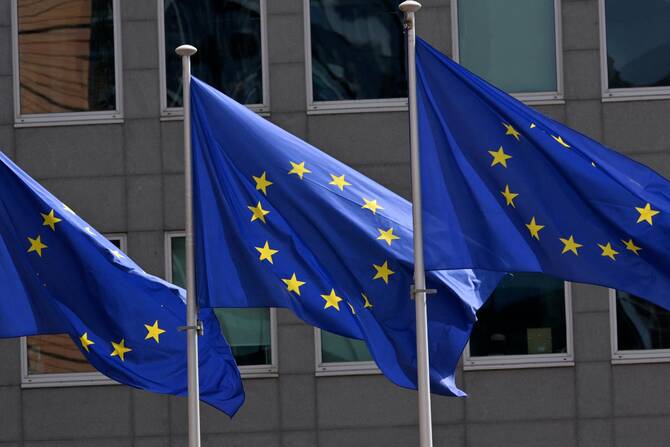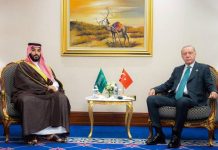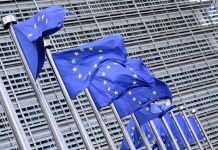
More than three and a half years on from Russia’s invasion of Ukraine, Europe is still grappling with its energy security by diversifying its oil and gas imports away from Moscow and toward other markets. While progress has been made, it has often been a case of two steps forward and one step back.
For years leading up to 2022, Europe enjoyed relatively easy access to cheap Russian oil and gas. Russia was happy to sell to Europe. Moscow needed the money and knew that doing so gave it leverage in any bargaining or negotiations with Brussels. In the past, there have even been cases where Russia used its energy exports as a tool of foreign policy — leveraging Europe’s dependence by disrupting supply.
Europe’s energy situation was made even more precarious by its incessant drive toward renewable energy at all costs. Nuclear power plants were decommissioned. Costly and only moderately effective solar and wind projects became the preferred method of power generation, while coal mines were closed.
Russia’s large-scale invasion of Ukraine in 2022 was considered a wake-up call to many. At the time, there was widespread talk about Europe shifting away from Russian energy to new sources. That enthusiasm led to concrete measures at first. By early summer of that year, the EU had signed a new agreement with Azerbaijan that increased Caspian gas exports to European markets, offsetting some of the imports previously coming from Russia. Europe also sought new sources of gas from North Africa, particularly Algeria. The same can be said for the US, which has seen a significant increase in gas exports to Europe since 2022.
The enthusiasm shown in the early days of the war has since given way to a more complicated reality. Since 2022, EU countries have spent an estimated €213 billion ($248 billion) on Russian energy — far more than the roughly €167 billion they have provided to arm Ukraine over the same period. Some European countries have managed to reduce their dependence on Russian energy, while others have done little. Although total EU payments to Russia fell to €11.4 billion between January and August of this year — a 21 percent drop from last year — nearly half of the total came from just two countries, Hungary and Slovakia, both of which continue to resist calls to diversify.
Both Budapest and Bratislava have been among the most cautious in their public support for Ukraine and, at times, have seemed sympathetic to Moscow’s view. But there has even been an increase in Russian energy imports from countries that are vocal supporters of Ukraine, including France, the Netherlands, Croatia, Romania, Portugal and Belgium. It is shocking that, as the war in Ukraine approaches the end of its fourth year, there are European countries that are still increasing their imports of Russian energy when the exact opposite should be happening.
The absurdity of this situation has not gone unnoticed by the Trump administration. Last month, President Donald Trump posted on Truth Social that he was ready to implement a major sanctions package on Moscow “when all NATO nations stop buying oil from Russia.” He described the continued purchase of Russian oil as “shocking,” acknowledging that it weakens the West’s negotiating position against Moscow.
G7 finance ministers released a statement after meeting virtually on Oct. 1, declaring they are ready to “take joint steps to increase pressure on Russia.” Specifically, they highlighted the issue of continued purchases of Russian energy, stating that the group “agreed that now is the time to maximize pressure on Russia’s oil exports — a major source of their revenue.”
It is estimated that stricter measures by Europe and the US could slash Moscow’s income from crude oil by up to $80 billion a year. Obviously, this would have a huge impact on Russia’s economy and its ability to wage war against Ukraine. Whether this rhetoric will translate into policy remains to be seen — but, if past experience is any guide, it is unlikely.
Trump has a role to play as well. In the short time he has been back in the Oval Office, his administration has made real efforts to ramp up US oil and gas production and facilitate exports to partners around the world. The recent secondary tariffs the US imposed on India for purchasing Russian oil also add pressure on Moscow. There have even been indications this week that the price of crude oil globally is decreasing as supply slowly outpaces demand. This will be making Moscow nervous.
Trump knows this, which is why he posted his blunt message last month urging Europeans to end their imports of Russian energy.
That said, this does not mean a peaceful resolution to Russia’s invasion of Ukraine is imminent. Trump could be motivated by one of two reasons. He might demand that Europeans stop buying Russian energy before he applies greater pressure on Moscow, knowing that Europe cannot realistically do so in the short term — thus allowing him to shift the blame for the lack of progress in peace talks away from himself and onto Europe.
Or he could genuinely hope that Europe takes concrete steps to cut its dependence on Russian energy as a way to put real pressure on Moscow to come to the negotiating table in good faith — something it has yet to do since Trump began his peace initiative earlier this year.
One thing is certain: cutting off the revenue source allowing Russia to continue the war is just as important as European countries arming Ukraine with weapons. But it will not be until Europeans take meaningful steps to reduce their dependence on Russian energy that Moscow truly starts to feel the pinch and will finally come to the negotiation table.
BY: Writer Luke Coffey is a senior fellow at the Hudson Institute.
Disclaimer: Views expressed by writers in this section are their own and do not necessarily reflect The Times Union’ point of view






